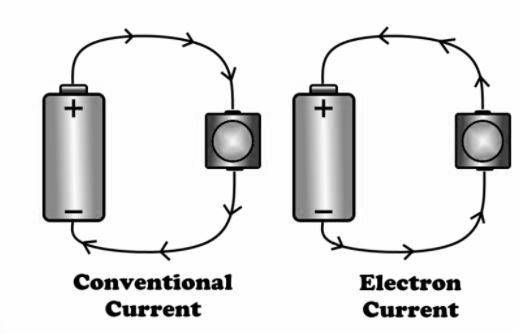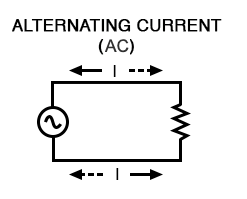What is Electric Current, its Unit, Formula, Types & Applications
What is Current?
Current is the rate at which electrons flow past a point in a complete electrical circuit. At its most basic, current = flow.
Electric current, any movement of electric charge carriers, such as subatomic charged particles (e.g., electrons having negative charge, protons having positive charge), ions (atoms that have lost or gained one or more electrons), or holes (electron deficiencies that may be thought of as positive particles).
An ampere (AM-pir), or amp, is the international unit used for measuring current. It expresses the quantity of electrons (sometimes called “electrical charge”) flowing past a point in a circuit over a given time.
A current of 1 ampere means that 1 coulomb of electrons—that’s 6.24 billion billion (6.24 x 1018) electrons—is moving past a single point in a circuit in 1 second. The calculation is similar to measuring water flow: how many gallons pass a single point in a pipe in 1 minute (gallons per minute, or GPM).

Conventional Current & Electron Current
As we know that the electric current is the flow of charge. The charge could be positive or negative. Due to the motion of these two types of charges the current is divided into two types of electric current flow:
Electron Current Flow:
Electron current flow is the movement of negative charge particle also known as the electron. The direction of electron current is from the negative terminal of the battery into the external circuit & into the positive terminal of a battery or cell. It is because the electron is negatively charged & the same charges repel each other while opposite charges attract.
Electron Current flow is assumed in electronic engineering and circuits while solving and analyzing the circuits.

Conventional Current Flow:
The flow of positively charge particles in a conductor is called conventional current. The direction of the conventional current is from positive to the negative terminal of the battery. Or the conventional current moves from higher potential to lower potential.
Conventional Current flow is assumed in electrical engineering and circuits while solving and analyzing the circuits.
Types of Electric Current
Based on the flow of charge, the current is divided into two types;
Direct Current (DC)
The direct current is a type of electric current whose direction does not change & conventionally it flows from the positive terminal of the battery to the negative terminal of the battery.

Alternating Current (AC)
The type of electric current whose direction changes continuously throughout the time is called alternating current or AC.
The number of times it changes its direction in a second of time is called its frequency. We normally use AC in our homes having a frequency of either 50 or 60 Hz depending on your region.
Since alternating current change its direction, its polarity does not matter. However, the alternating current cannot be used for DC application or stored, at least not in its AC form.

Definition of Electric Current:
The flow of charge particles or the rate of flow of charge in a conducting medium is called electric current. The charge particles could be negative (electron) or positive (proton).
Just like a river current, which is the continuous flow of water molecules, an electric current is the continuous flow of charge particles. The amount of charge flowing through a certain point in a conducting medium in a specific time is called electric current.
Electric current is one of the seven base quantities. It is denoted by the letter “I”
Formula & Unit of Electric Current
As we know the electric current is the rate of charge flow i.e. charge/time. So the electric current can be calculated by formulae;
Electric Current (I) = Charge (Q) / Time (t)
Read article – Units of Resistivity
Visit NCERTplanet.com for NCERT solutions and Textbook downloads



